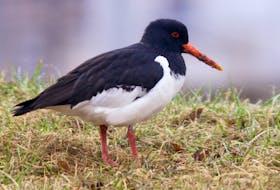
At long last, summer is finally here!
At 12:54 p.m. ADT (12:24 p.m. for Newfoundland/Labrador) on June 21st, the summer solstice occurs, marking the official commencement of the summer season for us here in the northern hemisphere (and the winter season in the southern hemisphere).
It’s also the longest day (period of sunlight) of the year, and, consequently, the shortest night.
The term "solstice" derives from the Latin solstitium, with sol meaning sun, and stititium meaning "to stand still". The latter refers to the northernmost point (along the horizon) that the Sun rises on the date of the summer solstice, whereupon the sun appears to "stand still" and, thereafter, to begin moving (rising) southward along the eastern horizon on subsequent days, heading towards its southernmost point of rising above the horizon on the Winter Solstice in December.
For us here in the northern hemisphere, the Earth's axis of rotation is at its maximum tilt (obliquity) of approximately 24.5 degrees towards the sun, resulting in the sun's rays hitting our hemisphere more directly, bringing us warmer, summer weather.
The date of the summer solstice can vary between June 20 and June 22. This is partially due to the difference between our Gregorian calendar of 365 days and the actual time it takes the Earth to make one complete orbit around the sun (known as a tropical year) of 365.242199 days. Add to this difference, the Gregorian calendar's addition of an extra day (leap day) every four years (leap year), and the slight wobble in the Earth's rotation (known as "axial precession") due to the gravitational pull of the moon and planets, and you end up with the date of the sun reaching its most northern point along the horizon in June varying from year to year. The Summer Solstice in 2020 and 2021 occurs on June 20, with the 2022 event falling on June 21.
Though we, in North America, mark the summer solstice as the beginning of summer, some European countries continue to celebrate it as "midsummer." This date was traditionally marked as the mid-point of the growing season, between the planting and the harvesting of crops; an occasion for much singing, dancing and feasting. These midsummer celebrations of the summer solstice marked one of the four "quarter days" of the year celebrated in ancient time. Some modern calendars, including The Old Farmer's Almanac, recognize June 24 as "Midsummer Day".
Whether you celebrate today as the beginning of summer or as midsummer, be sure to make the most of the long hours of sunlight (if you are lucky enough to have any) in whatever manner you choose. Unfortunately, hereafter, the days will slowly, but steadily, grow shorter, with the nights correspondingly growing longer, as we head towards the longest night and shortest day of the year on the Winter Solstice in December. Hey, at least that's six months away!
More in Atlantic Skies
Glenn K. Roberts lives in Stratford, P.E.I., and has been an avid amateur astronomer since he was a small child. His column, Atlantic Skies, appears every two weeks. He welcomes comments from readers at [email protected].









